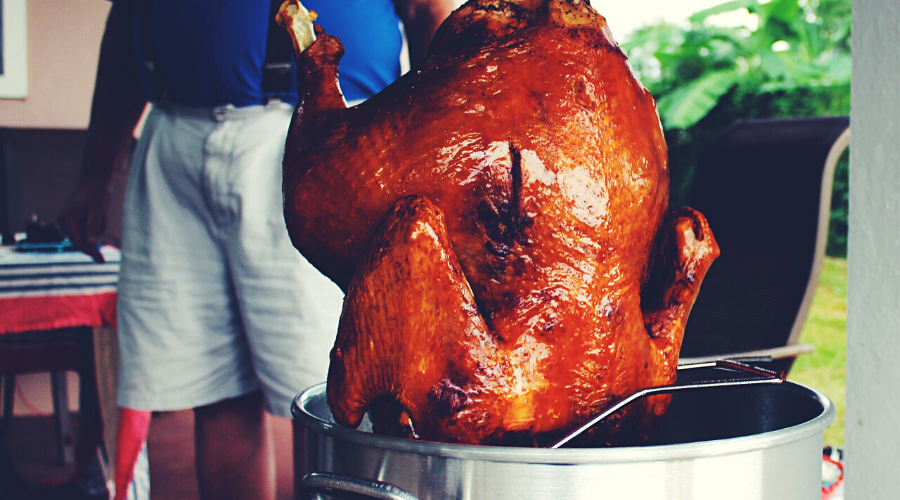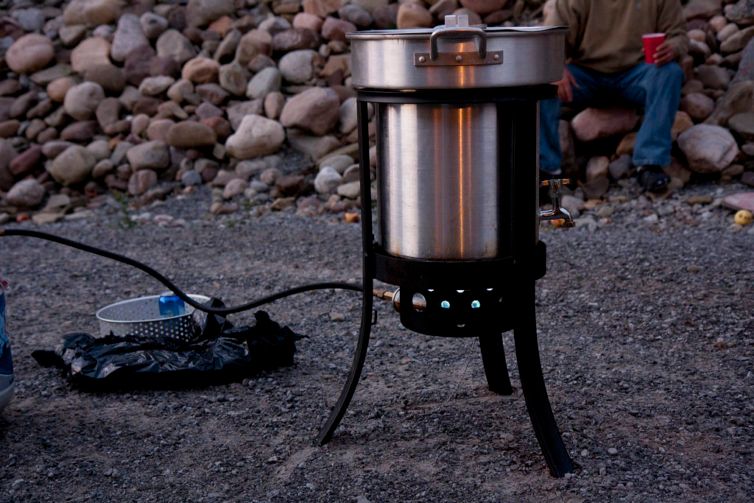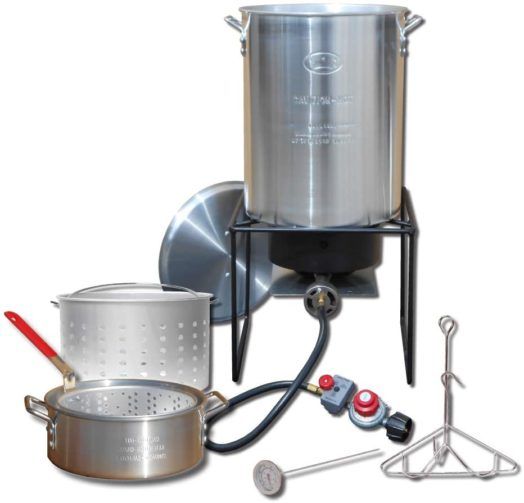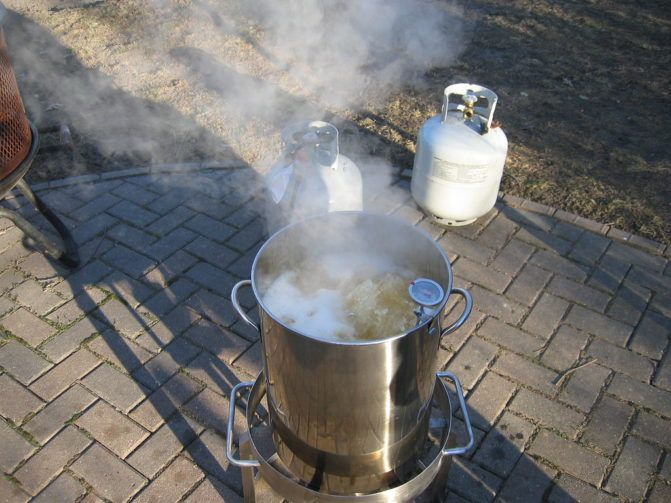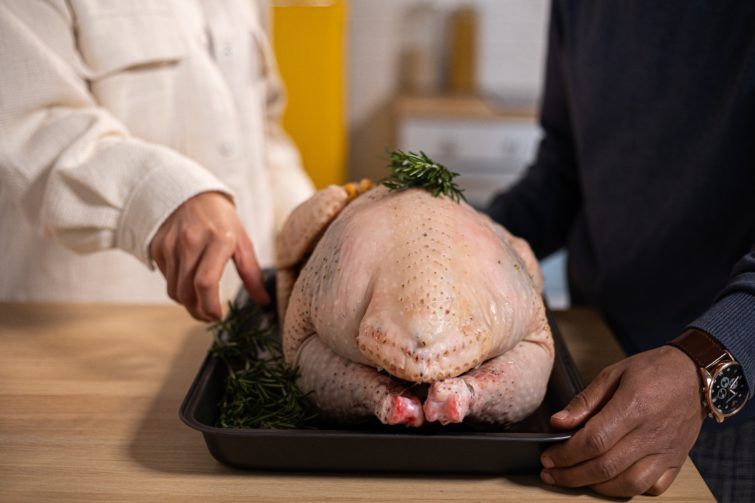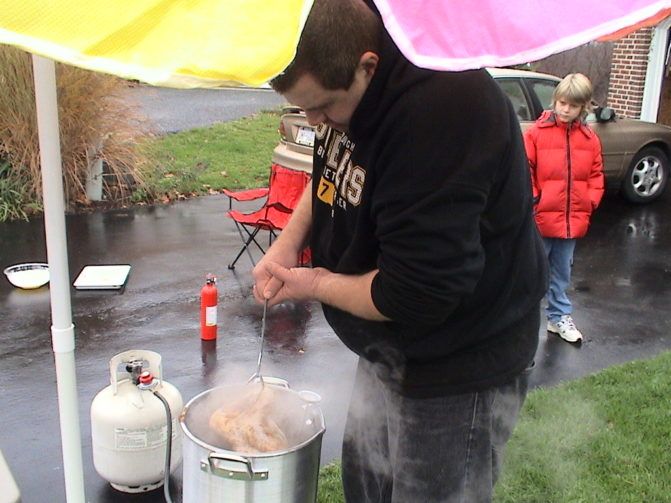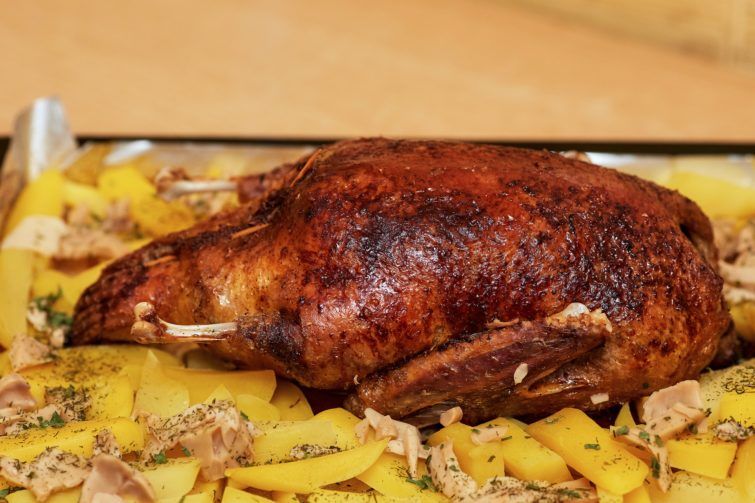Recent years have seen an explosion of interest in deep-fried turkey for two great reasons: the increased availability of specially made home turkey fryers and the appeal of this traditional bird with a crusty twist. Sure, you could cook your turkey on a gas grill, but frying is so easy. This article might be short, but it has all you need to know!
Frying a bird at home can be a challenging task requiring special safety precautions and temperature monitoring that’s not typical with an oven-baked bird; but with just a small investment of time and effort, you too can enjoy the payoff of a tasty turkey seared crisp on the outside, moist, juicy and delicious on the inside.
Step-By-Step Guide On How To Deep Fry A Turkey
Step one: Pick a Turkey Fryer & Oil
Image Credits: mgerskup on Creativecommons
First things first: Invest in a quality deep fryer. Most of the turkey fryers are either electric models or come with a propane tank. There’s no difference in how well or quickly they cook the bird, so choose based on your personal preference. They can range cost $70 to $100 for a basic, electric model or more than $300 for a propane-powered, restaurant-quality fryer. Here's our favorite one for outdoor home use:
King Kooker Propane Outdoor Fryer
This guy will fry up to a twenty pound turkey. It also doubles as a boiler for corn, potatoes, or seafood. It comes with a fry thermometer and is propane powered. All for less than $100.
The key to selecting your fryer is the size. You’ll want to make sure it can accommodate the size of bird you have in mind. The ideal fryer will let your turkey fit in with ample space on all sides and at the top to account for oil displacement once the bird is dropped in.
You’ll need roughly three gallons of oil for a 12-pound turkey, and peanut oil is the best. It doesn’t break down the way vegetable or corn oils do, enabling it to maintain temperature better and ensure an evenly cooked bird. If you want to reuse the oil make sure you know how many times you can reuse it.
Step Two: Apply The Safety Rules
Image Credits: Decaf on CreativeCommons
Before you start cooking your turkey, make sure to apply all the safety tips. Because you’ll be placing a large bird into a big cooker full of oil, it’s best that you not fry a turkey on a deck or any other surface that could catch fire if the oil boils over. A concrete floor is ideal, so a clean garage, driveway, or unfinished basement could work just fine for frying your turkey.
Step Three: Prepare Your Turkey
Image Credits: Monstera z Pexels
Preparing the turkey is as important as frying it. First, make sure to buy a fresh turkey. It has to be completely thawed before you prepare it. Then Place it on paper towels and let it rest for a moment. Now you want to get rid of any skin that is close to its neck. Also, ensure that the neck hole has at least one inch in diameter.
The day before frying, prepare it with a few injections of the marinade and a dusting of salt and pepper. Remember, you’re deep-frying, so too much seasoning rubbed on the bird will likely end up in your oil, not in your mouth.
Step Four: Deep Fry Your Turkey
Image Credits: Mr. Jay Yohe on CreativeCommons
The oil temperature needs to have 375 degrees. Once the oil reached this temperature, place your turkey in the fryer basket and very slowly lower it into the oil. Wear an oven mitt for this in case any oil pops. You want roughly two inches of space at the top of the fryer to minimize the chance of boil over, or oil spills when deep-frying a turkey.
A trick to checking this beforehand is to fill the cooker with water, put your bird in, and check the displacement. Remove water until the displacement isn’t overflowing, then take your bird out and mark the proper fill level.
Your cooking oil should include instructions for meat cooking times; four minutes per pound is a general guideline. Once your turkey is ready, remove it slowly and immediately place it on a platter covered in absorbent material.
Step Five: Serve It Up
Image Credits: Tengyart on Unsplash
Let the bird rest for 30 minutes before serving.
The frying process locks the juices inside the turkey, making it distinctly moist. Set one on your Thanksgiving table or carve one up for a summer treat and watch your guests gobble it up!
To Wrap Up
Turkey's meat is rich in proteins and is extremely tasty. We tend to have it only on special occasions, but there is no problem having it more often than for Thanksgiving. Once you get your Turkey Fryer, you can serve it as often as you want. First, because it is very easy to make and because the cooking process doesn't take too much time. Just remember to apply all safety rules if you don't want to get burned or damage your property. And what's most importantly, enjoy your food!

